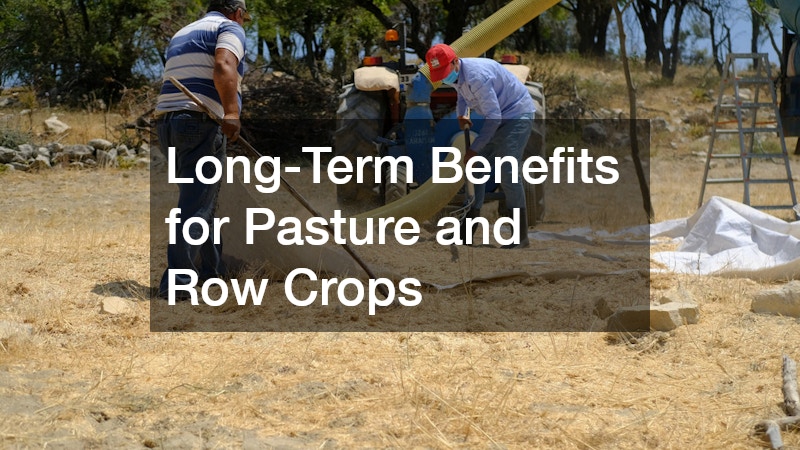Healthy soil is the foundation of a productive farm. But over time, the natural balance of soil nutrients can shift, affecting its ability to support strong crop growth. One of the most overlooked but highly effective tools in maintaining soil health is agricultural lime—commonly known as ag lime. Whether you’re growing corn, soybeans, wheat, or pasture grass, applying ag lime can help restore your soil’s pH balance and unlock its full growing potential. In this article, we’ll explore why your farm needs ag lime and how it plays a critical role in improving soil performance year after year.
What Is Ag Lime?
Ag lime is a soil amendment made from crushed limestone or dolomite. It is rich in calcium carbonate and, depending on its source, may also contain magnesium carbonate. The primary purpose of ag lime is to neutralize soil acidity, raising the pH level of your soil to a range that is optimal for plant growth—typically between 6.0 and 7.0. When soil becomes too acidic, essential nutrients like phosphorus, potassium, and nitrogen become less available to plants. Ag lime helps correct this, making nutrients more accessible and improving the overall efficiency of fertilizers.
The Importance of Soil pH Balance
Soil pH plays a vital role in plant health and productivity. When the pH is too low (acidic), crops struggle to take up nutrients even when they are present in the soil. Acidic conditions can also promote the presence of toxic elements like aluminum and manganese, which can damage plant roots and hinder growth. On the flip side, a balanced pH fosters healthier root development, stronger nutrient uptake, and better resistance to pests and diseases. Applying ag lime helps maintain this critical balance, supporting long-term soil fertility and consistent crop performance.
Ag Lime and Nutrient Efficiency
One of the key benefits of using ag lime is improved nutrient efficiency. When soil pH is properly managed, your fertilizer inputs become more effective. For example, phosphorus availability drops sharply when the pH falls below 6.0. Ag lime helps keep phosphorus in a form that plants can absorb. This not only benefits crop growth but also helps reduce nutrient runoff into nearby waterways. Balanced pH creates an environment where crops can make the most of every nutrient applied, reducing waste and improving sustainability.
Encouraging Microbial Activity
Healthy soil is teeming with life. Microbes such as bacteria, fungi, and earthworms all play a role in breaking down organic matter and releasing nutrients for plant use. But acidic soil can suppress microbial populations, slowing down the natural processes that support soil structure and fertility. Ag lime helps maintain a more hospitable environment for these beneficial organisms by reducing acidity and stabilizing pH. When microbial life thrives, your soil becomes more productive and resilient over time.
Long-Term Benefits for Pasture and Row Crops
Both pasture and row crop operations stand to benefit from regular ag lime applications. For livestock farmers, healthy pastures mean better forage quality and increased livestock weight gain. Ag lime improves grass and legume growth, resulting in thicker, more nutritious grazing fields. For row crop producers, ag lime creates the optimal environment for seed germination, root development, and canopy formation. It’s a foundational input that supports every other aspect of crop management—from weed control to harvest timing.
Signs Your Farm Needs Ag Lime
Soil testing is the best way to determine whether your fields need lime. However, some warning signs can also indicate soil acidity issues:
-
Stunted crop growth despite adequate fertilization
-
Increased presence of weeds that thrive in acidic soils
-
Poor nodulation in legume crops
-
Decreased effectiveness of herbicides
-
Thin or patchy pasture growth
If you’re experiencing any of these issues, a soil test followed by an application of ag lime could restore balance and improve performance.
Relying on Ag Lime Delivery Services
Timely application of ag lime is crucial, and that’s where ag lime delivery services come into play. These services ensure you receive the correct type and quantity of lime at the right time, based on your soil’s specific needs. By working with experienced providers, you avoid the hassle of sourcing, transporting, and applying the material yourself. They often have the equipment and expertise to evenly distribute the lime across your fields, helping you achieve consistent results throughout your operation.
When and How to Apply Ag Lime
The best time to apply ag lime depends on your crop rotation and soil conditions. Typically, fall is an ideal time because it allows the lime to react with the soil over the winter months. However, spring applications can also be effective if timing is tight. Incorporating lime into the soil—rather than simply applying it on the surface—will speed up the pH adjustment process. This is especially important for no-till operations or fields with heavy clay soils.
Ag lime is more than just a soil amendment—it’s a long-term investment in your farm’s productivity, profitability, and sustainability. By correcting soil acidity, improving nutrient uptake, and enhancing soil structure, ag lime sets the stage for healthier crops and better yields. Regular soil testing and the support of reliable ag lime delivery services ensure your fields stay in peak condition for years to come. Don’t wait for declining yields to take action—start building better soil today with ag lime.

